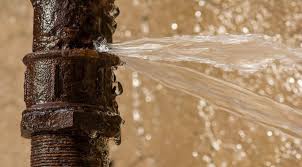A leaky faucet is not just an annoyance; it can also lead to higher water bills and potential water damage if left unchecked. Fortunately, fixing a leaky faucet is a manageable DIY project that can save you money and give you a sense of accomplishment. In this guide, we’ll walk you through the steps to diagnose and repair a leaky faucet, whether it’s a compression, ball, cartridge, or ceramic disk type.Before you begin, gather the following tools and materials:
- Adjustable wrench
- Screwdrivers (flathead and Phillips)
- Replacement parts (washers, O-rings, or cartridges, depending on your faucet type)
- Plumber’s grease
- Towels or rags
- Bucket or bowl (to catch water)
Step 1: Turn Off the Water SupplyLocate the shut-off valves under the sink and turn them clockwise to stop the water flow. If there are no individual shut-off valves, you may need to turn off the main water supply to your home. Open the faucet to drain any remaining water in the pipes.Step 2: Disassemble the FaucetUse a screwdriver to remove the handle of the faucet. This may involve prying off a decorative cap to access the screw underneath. Once the handle is off, you’ll see the inner components. Take note of how the parts are arranged so you can reassemble them correctly later.Step 3: Identify the ProblemInspect the components for wear and tear. Common culprits include:
- Worn-out washers: These are often the cause of leaks in compression faucets.
- Damaged O-rings: These small rings can degrade over time, leading to leaks.
- Faulty cartridges or valves: Cartridge and ceramic disk faucets may require replacement of these parts.

Step 4: Replace the Faulty PartsRemove the damaged parts and take them to a hardware store to find matching replacements. Apply plumber’s grease to new O-rings or washers to ensure a smooth fit and prevent future leaks. Reassemble the faucet in the reverse order of disassembly.Step 5: Test the FaucetTurn the water supply back on and slowly open the faucet to check for leaks. If the leak persists, double-check your work or consider consulting a professional plumber.Preventive Tips to Avoid Future Leaks
- Avoid overtightening the faucet handles, as this can damage the washers.
- Clean the faucet aerator regularly to prevent mineral buildup.
- Inspect your faucet components annually for signs of wear.
By following these steps, you can successfully DIY fix a leaky faucet and enjoy a drip-free sink. Not only will you save money on plumbing bills, but you’ll also contribute to water conservation efforts. Happy fixing!
